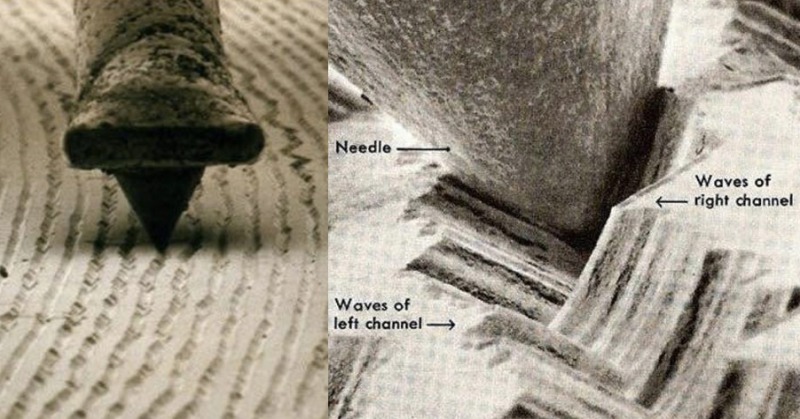The sound pressure wave is first detected and then converted to another physical quantity in an "analogue" format which is a representation of the original prior to recording. The recording process may be "analogue" or "quantised digital" where the quantised value may be pure binary or in one of many codes, such as that used over a USB connection.
Depending on the microphone, it may not be only pressure that is detected. A cardoid, for instance, detects half pressure and half velocity along its axis, and adds the two together. There are other examples.
"Quantized digital" is just another analog of the signal. Furthermore, the proper terminology is "quantized, sampled". "Digital" (although it usually is) does not have to be sampled.
Whether the signal representing the original sound pressure wave is "analogue" or "digital", the interpretation depends on the source and the receiver. A pulse in a "digital" system is essentially an analogue signal with only two recognised values. It is the interpretation of the information encoded in the signal that differentiates "analogue" and "digital" systems.
A simple pulse is only one way to encode digital signals, and not necessarily the best. There is an entire world of knowledge missing when you reduce a digital signal to a pulse or a USB waveform. Modems exist, and are common. The storage and transmission of a set of digitized samples via modem uses a much wider bandwidth than the original signal, which gives rise to redundancy that can protect the digitized signal very, very well. In this, again, as I said previously, the KEY, the important question, is that the time and level were captured discretely in a way that can be protected in an extremely effective way. Unsampled/unquantized systems like FM (wideband FM, not narrowband FM) also use bandwidth redundancy, but in a less effective way.
Quoting from a previous post "A voltage or current waveform propagated in any transmission medium is subject to the same laws of physics. In this respect alone there is no difference between a voltage (or current) waveform that represents a varying amplitude or a varying frequency or a varying pulse train. This is fundamental."
Actually, that obscures the facts of the matter completely, and while the waveforms are subject to physics, the chance of a digital error can be reduced trivially in a benign recording medium to "once in the age of the universe". (and the loss will be flagged as 'bad data') The mistake here is in assuming that a signal that is purely continuous in time and level has the same sensitivity to error as a signal that is quantized and properly encoded for transmission over a benign medium, and that is simply false. Given the same "wire plus amplifiers", a signal with 96dB SNR will require a substantially better than 96dB from the "wire plus amplifiers" to avoid a simply measured error, even ignoring mild frequency shaping. Given a quantized, sampled, and properly encoded system, a channel with very low SNR can provide absolutely perfect recovery of the quantized data BECAUSE OF THE KNOWLEDGE of the system in both time and level quantization, coupled with the redundancy built into the quantized, sampled stream. The "low SNR channel" does have a wider bandwidth. Shannon makes this clear in his basic paper on information theory.
One caveat of such systems is that you get very, very little warning (except from the demodulator) before the system fails completely in a properly encoded signal transmitted by digits. One such system I worked on, involving a radio system and a fading simulator, provided "no detected errors" at a given (proprietary) level. at 0.1 dB below that in SNR, it provided an error per second. At another 0.1dB below that, the signal could not be recovered. In any case, the analog audio signal in the comparable analog case (AM or FM, no matter) would have been entirely wrecked, let alone "impaired" at any of those 3 closely spaced levels. Shannon's work was, and is, right.
So your quoted, misleading (at least in the context offered here) statement leads the reader to a profoundly mistaken conclusion that continuous time and level systems have the same sensitivity to noise as a sampled and quantized system. Was that your intention? Furthermore, the (gasp) ITALIC quote does not necessarily make for an argument. A proper citation mentions author and qualifications, as well as context.
Once again, it is the knowledge of exact timing and level (to the quantization level) that provides the means to protect a digital signal. Information-theoretic systems allow the storage and transmission of that signal with arbitrary reliability (not accuracy, the accuracy is set forever at capture).
What was your point, anyhow? It appears that you wanted to have an argument, and now you've succeeded.
Last edited:


